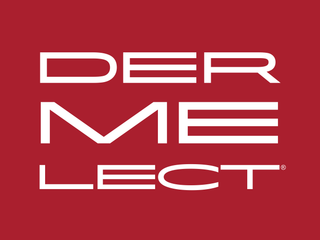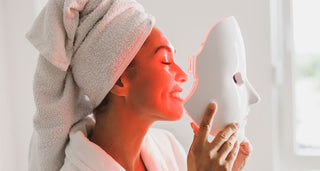Red Light Therapy: Does It Actually Work for Your Skin?
As the skincare landscape continues to evolve, red light therapy has positioned itself as a promising, science-backed treatment for addressing everything from fine lines and uneven tone to inflammation and post-acne scarring. Known for its ability to energize skin cells and support natural regeneration, the therapy is increasingly used in both professional and at-home settings. But with growing popularity comes an important question: does red light therapy truly deliver visible, lasting results—or is it simply the latest high-tech skincare promise?
Understanding how red light interacts with the skin at a cellular level offers clarity on its true potential, as well as how to incorporate it effectively into a modern skincare regimen.
First, What Is Red Light Therapy?
Red light therapy (RLT), sometimes referred to as low-level light therapy (LLLT), uses specific wavelengths of red and near-infrared light to stimulate the skin on a cellular level. The light penetrates through the epidermis and into the dermis, where it energizes the mitochondria—the powerhouses of your cells.
In doing so, RLT helps to trigger a cascade of repair functions that can improve the way your skin looks and behaves. Think: increased collagen production, enhanced cell turnover, and reduced inflammation. All without discomfort, downtime, or harsh ingredients.
What Are the Skin Benefits?
Red light therapy has been studied for a variety of dermatological uses, with promising results. Here’s what the research and experts say it can help with:
- Fine lines and wrinkles: By increasing fibroblast activity and encouraging collagen production, red light therapy helps firm and smooth skin over time.
- Inflammation and redness: Red light calms the skin, which makes it ideal for those dealing with sensitivity, rosacea, or post-treatment irritation.
- Hyperpigmentation and tone: Consistent use may help even skin tone and improve texture, thanks to its regenerative effects on damaged or sluggish skin cells.
- Acne support: While red light doesn’t kill acne-causing bacteria (that’s blue light’s specialty), it does reduce inflammation and speed healing—making it a useful tool for preventing scarring and calming breakouts.
- Wound healing: Clinical studies have shown red light to be effective in speeding up the healing process for cuts, scrapes, and post-procedural skin.
How Long Until You See Results?
This isn’t an overnight fix. Like any cell-energizing therapy, red light delivers gradual, cumulative results with consistent use. Most at-home devices recommend 3–5 sessions per week, and you’ll typically start to notice subtle improvements in skin tone and hydration within a few weeks. More dramatic changes—like softened wrinkles or faded spots—can take 8 to 12 weeks of regular use.
Think of it as skincare maintenance, not instant transformation.
Is It Safe for Daily Use?
Yes—when used properly, red light therapy is widely considered safe and non-invasive. It doesn’t contain ultraviolet (UV) rays, and it doesn’t heat the skin the way lasers or radiofrequency treatments do.
There’s no need for recovery time, and the risk of side effects is minimal. Some users report mild warmth or temporary redness immediately after a session, but that typically resolves quickly.
As always, the key is using a device with proven specifications and safety testing—especially when shopping for at-home tools.
What to Look for in a Device
Not all red light therapy devices are equally effective. If you’re investing in a mask or handheld tool, here’s what to keep in mind:
- Wavelengths: For skin benefits, look for red light in the 630–660nm range and near-infrared in the 800–850nm range. These penetrate deep enough to stimulate dermal repair.
- Irradiance: This measures the power of the light. Higher irradiance means more energy delivered to the skin—but only up to a certain point. A well-balanced, clinically-tested device is best.
- Design: A full-face mask ensures even coverage, while smaller wands or panels work well for targeting specific areas like the forehead, jawline, or chest.
- Clinical backing: Always check that the brand has clinical studies or FDA clearance to support its claims.
A quality device may come at a higher cost, but if you’re serious about skin rejuvenation, the long-term benefits often outweigh the initial investment.
Pairing Red Light with the Right Skincare
To maximize the effects of red light therapy, consider incorporating targeted treatments and moisturizers that work in synergy with light-based skin rejuvenation. Supporting the skin both before and after therapy can enhance comfort, improve recovery, and boost visible results.
- Before red light therapy, prep the skin with a gentle exfoliant to remove dead cells and allow deeper penetration. A lightweight formula like a glycolic-based treatment helps smooth the skin’s surface without causing irritation.
- For delicate areas prone to fine lines, use a firming treatment designed to support collagen and reduce puffiness, such as a targeted eye and lid treatment.
- If your skin is sensitive, pair red light therapy with a calming cream that helps reduce redness and reinforce the skin barrier.
- To address uneven tone and visible irritation after breakouts or sun exposure, look for a serum that supports skin clarity, supports recovery and promotes healthy balance.
- Post-therapy, nourish and seal in hydration with an amino acid-rich moisturizer that calms and restores the skin barrier.
This type of skincare layering complements the rejuvenating benefits of red light therapy—making each session more effective and your glow even more noticeable over time.
The Bottom Line
Red light therapy has earned its place as a reliable, research-backed method for supporting skin health. Whether you’re dealing with signs of aging, irritation, dullness, or breakouts, the science supports its ability to improve skin quality from the inside out.
It’s not a replacement for a smart skincare regimen, but it can enhance and accelerate the effects of the products you already love. Add it to a well-rounded routine that includes barrier support, sun protection, and consistent hydration—and give it time. Skin renewal doesn’t happen overnight, but with patience, the glow is real.










